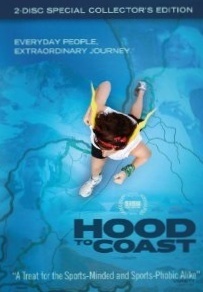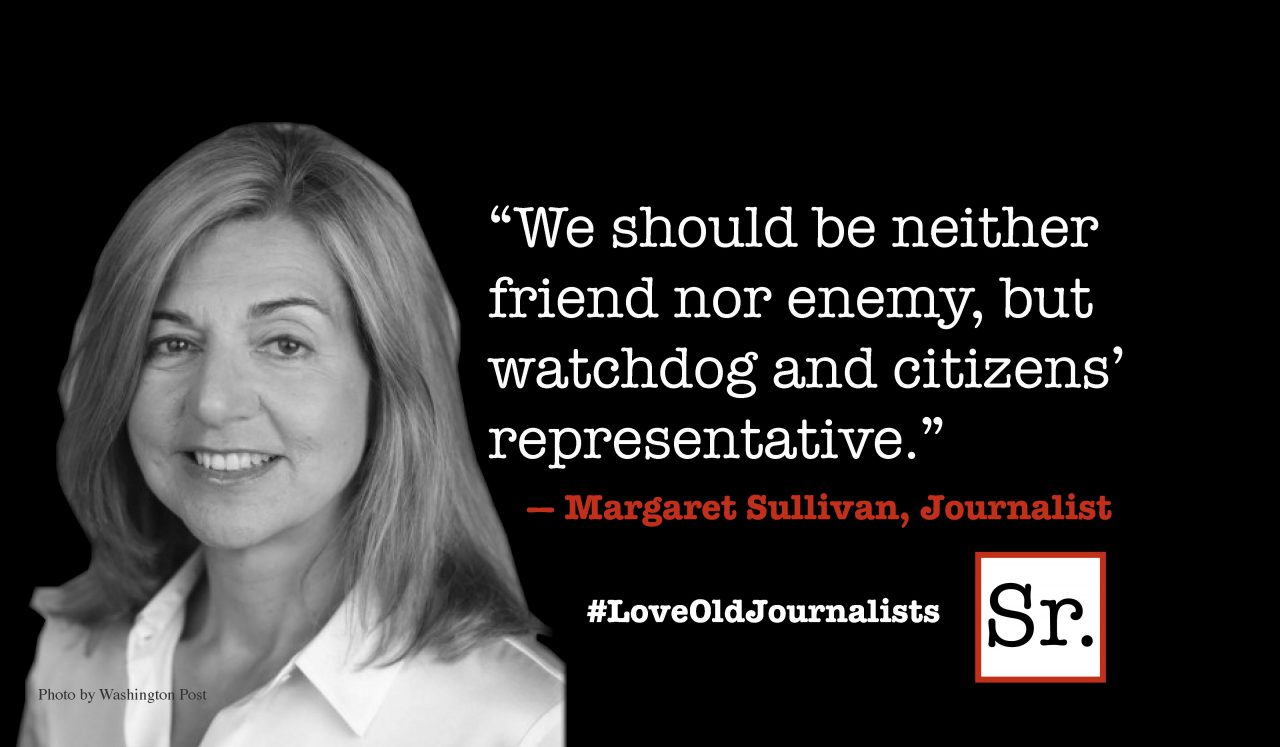Hood to Coast is a 197 mile course, going from Mt. Hood in Oregon to the beach on the Pacific Ocean west of Portland.
When I finished watching the video, I wanted to organize a team with a minimum age of 70 to run Hood to Coast. The team would be called Old People Running. Of course, I knew that wasn't a realistic thing to do at this time of my life, but that is the effect the video had on me. Before I viewed the video, I watched several short videos on youtube of Hood to Coast, and I thought, "Those kids looked like they were having fun, but that type of race isn't for me." The kids were youngsters in their 20s and 30s who were wearing strange costumes and dancing around while waiting for their wave to begin. I really didn't want to review the official video of the race, but I thought I'd look at the video since it covered the complete race, while the youtube videos just showed a few minutes before the race began. I'm glad I did!
The directors of the video did one really great thing: The race had 12,000 runners, and they choose a few of the runners and followed them through the whole race. My interest was immediately captured by the "characters" of the race, the runners who became the video. I realized that not all of the runners were youngsters having a good time. In fact, almost all of the "characters" were in their 40s or older.
Kathie, 67 years old, who in 19 years of marathon running had run 75 marathons and the Hood to Coast (HC)several times, died shortly after starting her third leg of the race that was held the year before.
Steve who has run HC every year it has been held. He is a member of the Dead Jocks in a Box (coffin) team. The team goal is to be in the top six teams of their age group (50s and 60s), thus being guaranteed a position in HC for the following year and thus helping Steve continue his record of running all of the HC.
Travis, his mother, the wife of his brother Ryan, and friends of Ryan. Ryan died one month before the HC, and this group formed a team in memory of Ryan. Ryan's father, who has run HC in past years, drove one of the team vans.
Jason and Rachel. Jason described themselves as a team of sedentary graphic animators. Prior to the HC, the longest Jason and Rachel had run was 3 miles.
A couple more runners were featured in the video, older, overweight men who plodded along. The term "road kill" refers to runners who are passed during the race, and one of the older men said that term was coined just for him.
 |
|
Hood to Coast (2011) Directed by Christoph Baaden |
Hood to Coast was described in the video as Woodstock moving down a road and a team sport for lonely distance runners. The race begins at the 6000 foot level on Mt. Hood and ends at the Pacific Ocean, with hills and valleys and city traffic in between. It is a topographical roller coaster. Hood to Coast is a relay. There are 12 runners on a team, and two vans transport the teams from point to point along the course. The course has been divided into 36 segments or legs, and each runner runs three legs. Prior to running the race, each team decides who will run each leg.
Jason and Rachel considered themselves as the slowest runners on their team, and prior to running HC, they ran a 5K to see who would be next-to-last and last. At the conclusion of their 5K, they both commented that was the longest distance they had ever gone, and they decided to not train for the race. They would just eat, drink and then try and run HC. On the day of the race, Jason had dyed his hair bright red, and it was easy to spot him in the crowd of runners.
The first Hood to Coast (27 years before the race featured in the video) had 8 teams. The race was started by distance runners who were bored with marathons, and they ran it as a fast, challenging race. The next year, the race had 64 teams. Then 150 teams, followed by 234 teams. The race depicted in the video had 1000 teams. As mentioned above, the first 6 teams in each age-division have a guaranteed entry in the following year, and the rest of the teams are chosen by lottery. The teams were organized in waves. The race began at 7:30 am and the slowest wave went first, followed by the other teams, ordered by speed. The fastest wave began at 8:00 pm.
One of the high points in the video was Kathie. As I mentioned above, in the HC held the year before, Kathie completed two of her legs and started her third leg. Her heart stopped and she was dead. One of the runners saw her fall and ran to help. She said Kathie's eyes were open and she was staring into…nowhere. CPR was administered, and Kathie came back to life. For two minutes she had had no heart beat, and the doctor who treated her said that 99% of the people in that condition die. Her recovery is a testimony to the strength of her body (after completing 75 marathons, I would expect her body to be strong). A year later, Kathie ran HC with her doctor's approval, but she wore a heart-rate-monitor and was told to keep her heart rate to 120 or less. She ran with a triple heart bypass and two stents. Her doctor said Kathie doesn't feel the pain of a heart attack, and during the HC she ran with a running partner who was there to recognize if Kathy had problems with her heart. The first time Kathie and her partner checked her heart rate, it was 180. The partner immediately had them stop running and walk. Kathie's doctor forbade her to run the first leg, but Kathie did run it (and the subsequent two legs), and after the race she called her doctor and confessed. He said he knew she would run it.
Another high point to me was the struggle of Jason and Rachel to complete their legs. The began HC with 3 miles being their longest distance, but the legs were 5-7 miles in length, and the two runners really struggled to complete the legs. But, they did complete them and finished the race. A comment was made in the video that the runners had almost no sleep for about 36 hours. Yes, they had time between their legs, but there was too much activity and too high of adrenaline levels for them to get much sleep. Jason said he really wanted a hamburger but had to settle for the food prepared by his team.
The video showed the efforts of Ryan's family and friends to run in his memory. Flashbacks were given into Ryan's life, and the race was truly a spiritual time for them and for me.
There was a strong feeling of comradeship among the runners. The runners in the Dead Jocks team were fast and were able to cheer the slower runners on and to spray them with water to help cool them. As the vans traveled to the race and then from point to point, the runners honked and yelled to each other, for they were one big family. The goal of the race was to complete the race, not to be the fastest team. That is the way that we recreational runners should do all of our running.
The video was created by professionals and is a true professional product. It is being shown in movie theaters, and if it comes to a theater near you, be sure and see it! In the meantime, Hood to Coast is available from the official site and from Amazon.








